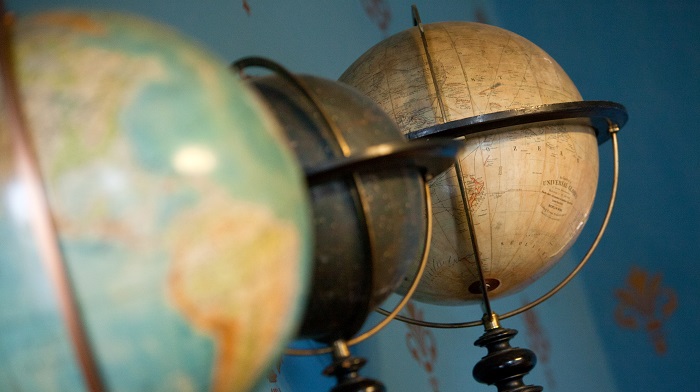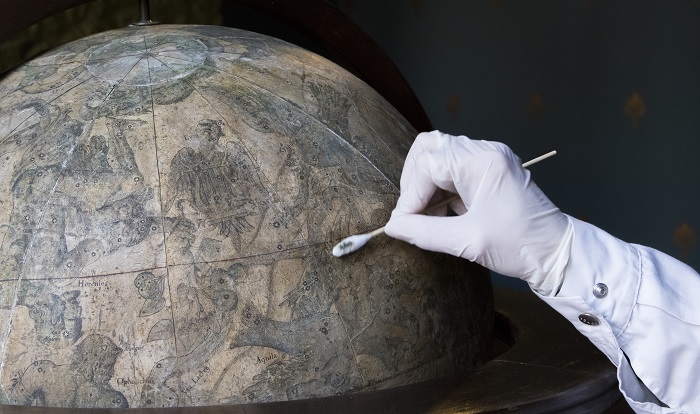
On the occasion of the opening of the first university museum of geography in Italy, the Save the Globes fundraising campaign was launched, with the aim of restoring a celestial globe from 1630, the work of the most renowned 17th century globe maker. Willem Blaeu, which has always been an instrument of study and teaching, as well as an extraordinarily fascinating work that represents the constellations and enchants both large and small spectators. Alongside the celestial globe, we wanted to support the creation of a didactic globe starting from two fragments of a terrestrial globe of 1645/48, fundamental for enriching the didactic part of the unique museum itinerary.
Thanks to the generous contribution of the Lions Club Padova Gattamelata of 4,500 euros together with the online donations of 1,400 euros, the globes will return to their original beauty.
"Restoration through crowdfunding strengthens the relationship of the Museum with its public - says Mauro Varotto, scientific coordinator of the Museum - and is the first step in a broader enhancement project that provides, in addition to the inclusion of globes in the visit path , the possibility of digital exploration of the details of constellations and comet stars represented in the celestial globe, which will allow the property to be enjoyed even from a distance". «The International Association of Lions Clubs, with the motto WE SERVE (We serve) that characterizes it, intends to promote, on a global level, an active interest in the civic, cultural, social and moral good of communities. The LIONS - says Doriano Magosso, President of the Lions Club Padova Gattamelata - are therefore at the service of the integration, cohesion and improvement of all the components of society. For this reason, the Lions Club Padova Gattamelata, even in this critical situation, has decided to contribute also to the restoration of the seventeenth-century Celestial Globe, in the awareness that this will allow, for a long time to come, to be able to admire and study it in its renewed, manifest, beauty. The pleasure and pride of the Club Members is also amplified by the choice of wanting to actively participate in the nineteenth anniversary of the establishment of our prestigious University ».
Learn more about the restoration of the globes

The restoration of the globes of the Geography Museum involves cleaning and restoring the legibility of the celestial globe, now partially compromised by a dense dark patina. The two sections of the globe, on the other hand, in addition to being clean, will be relocated within a transparent spherical structure which, in addition to ensuring the recovery and enhancement of the asset, will also represent an innovative teaching tool. The restored globes will be placed next to two other globes (from the 15th and 19th centuries) in the Music Room of the Wollemborg Palace, seat of the Geography Museum, and will therefore be permanently included in the tour itinerary. The two important restorations complement those completed in recent years by the Department of Historical, Geographic and Antiquity Sciences thanks to the financial support of the University Center for the University Museums, which involved three other globes and eleven models. Obviously, the list of museum pieces in need of restoration will not end with the fundamental restoration of the two Blavian globes. Among the plaster models, the Vesuvius and the Laziale Volcano by Amedeo Aureli, from the second decade of the twentieth century, remain to be consolidated, while four other pieces, made between the late nineteenth and early twentieth centuries in Italy and Germany, need cleaning. Two table globes and a model of the solar system, also dating back to the early years of the twentieth century and currently kept in the warehouses, require structural interventions, while some of the more than 300 historical murals would require cleaning and consolidation operations. Finally, even in the photographic collection, which includes important groups of glass plates from the early twentieth century, there are several pieces whose survival is at risk.


